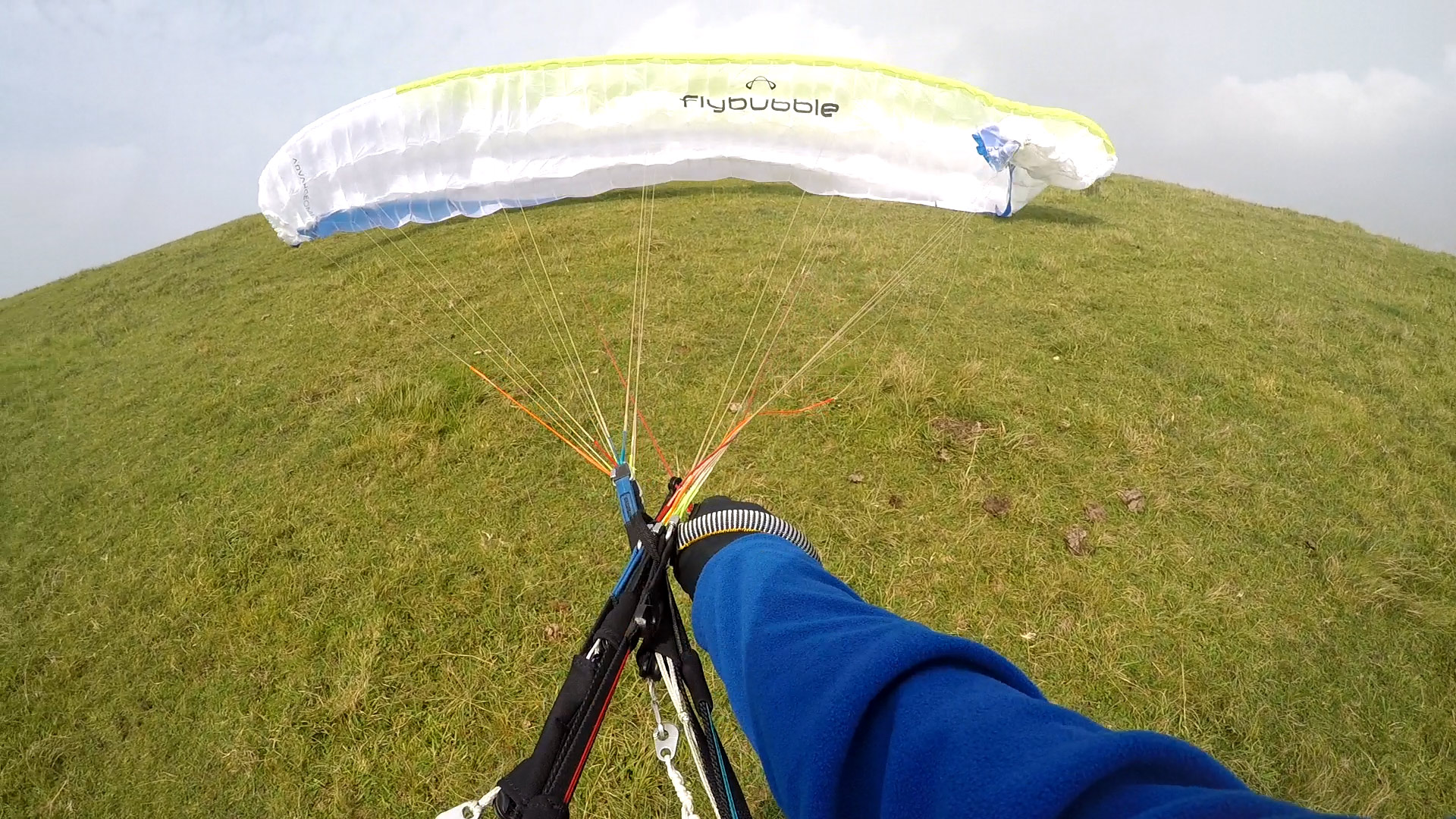
A cravatte is a nasty kind of collapse, where the fabric of the wingtip becomes trapped in the lines. This can cause a significant turn towards the cravatted side, which if left unchecked will become a rather radical spiral dive. The first thing to do when dealing with any cravatte is to weight shift away from it (plus a little brake if needed) to keep the wing on as straight a course as possible. Fly clear of the terrain and other pilots.
How do I clear the cravatte?

To fix a cravatte, it’s simplest to start with inducing a small collapse (a big-ear on one side) to try and release the tension on the line that is holding the fabric captive. It needs to be a sharp deep pull to provide enough ‘slack time’ for the fabric to escape. This will help to reduce the turning influence of the cravatte, so if the cravatte is impossible to clear you may decide to just keep the ‘big ear’ in and fly down to landing that way.

The second action to clear a cravatte is to pull down the stabilo (stabilizer) line on the side that is cravatted. This will help to pull the loose fabric closer to the tensioned A line, which allows it to escape. You can try this method on its own, or in conjunction with the collapse, depending on your situation. You can usually find your stabilo on the outside of your B-riser, marked in a bright colour.
The third method sometimes mentioned by paragliding pros is to stall the wing. This is only recommended for experienced pilots, at least those with an SIV course behind them. This is because if you stall the wing and it doesn’t clear the cravatte, you have a real mess to deal with. Either you must hold the wing in the full stall while it thrashes around until it releases the cravatte, or you must let it refly with the cravatted tip, in which case it will dive hard and go straight into a spiral dive. For pilots on very high-aspect ratio wings, this might be the only solution, but if you’re flying that class of wing, you have SIV experience and know what to do. I don’t want to complicate the process for most pilots, for whom ‘collapse or stabilo’ will be adequate in just about all situations.
A very important aspect to consider is your altitude when it happens. If you are low, or unsure that you will clear it fast enough, throw your reserve. A cravatte can go from hee-hee to OMG in a flash. It’s a serious problem. Be prepared to react if it looks like a right mess.
How do I stop a cravatte from happening?

Prevent a cravatte on launch by building your wing into a full wall before lifting it (hold it down using the back risers). On the ground the most common cravatte is caused by the wingtips rising, curling over and falling back through the A-lines. This can be difficult to clear using the collapse/big-ear technique, and it’s best to go straight for the stabilo line in this case.
If you only notice the cravatte when you've pulled the wing up, but before your feet have left the ground, kill the wing straight away using the brakes or back risers. Trying to fix the wing on a windy launch site can lead to being pulled very fast across the ground, like the pilot shown below.

In the air the most likely cravatte is from flying through a dust-devil or strong thermal, and allowing the wing to pitch sharply ahead and to the side on exit into the sinking air. The other one is using too much brake during thermaling, spinning the wing, getting a fright and letting it dive asymmetrically. To prevent the cravatte, always catch the dive using a sharp pull on both brakes (not more than 2 seconds) which should help to pressure the leading edge by forcing air into the cell openings.
How do I practice this technique?

Find a gentle slope with a steady breeze where you can kite your wing safely (be careful, a steep or windy launch site is not the place for this!) Take one wingtip, lift it and stuff it down through the outermost A lines. Then pull the wing up and try to clear the cravatte without letting the wing fall down to the ground. It’s harder than it sounds, because the cravatte will try to stall the wing at such low airspeeds. It will be harder to achieve on a flat field; some slope helps. Once you’ve mastered that one, try the variation of cravatte where the wingtip is pushed in from the side (between A’s and B’s).
It’s not safe to try induce cravattes in the air, but what you can do to improve your cravatte resistance is to work on your active flying, in particular pitch control. Pilots who have good pitch control very seldom have collapses, and a cravatte is even more unlikely.
How to fix a cravatte: Video guide
Enjoy our video which shows you how cravattes form and what to do with these nasty little creatures so they don’t ruin your flying fun.
Brought to you by Flybubble
Like what we do? The best way to thank and support us is to buy gear from us and recommend us to others. Review our service on Trustpilot and our products on Flybubble Shop. You can also subscribe to Flybubble Patreon. Thank you!

